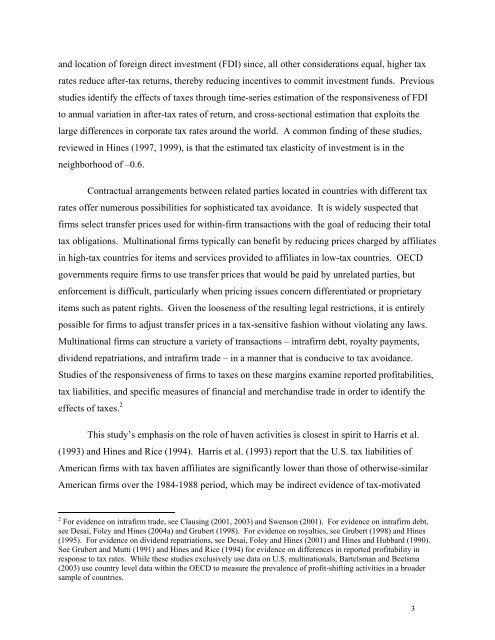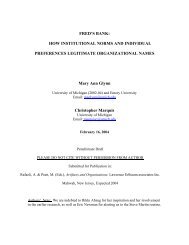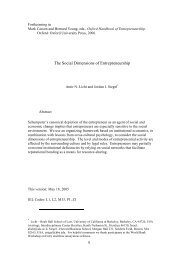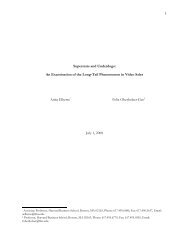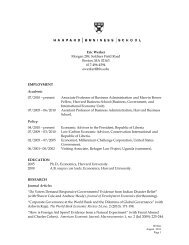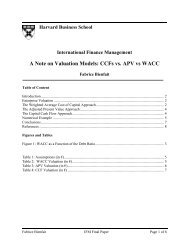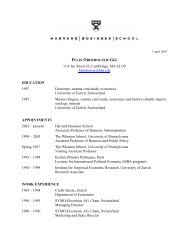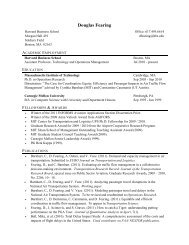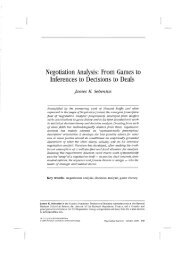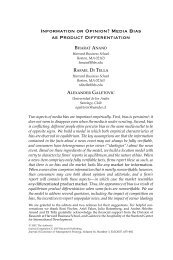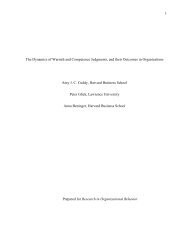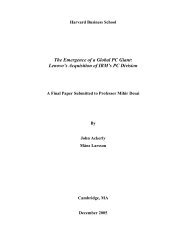The Demand for Tax Haven Operations - Harvard Business School
The Demand for Tax Haven Operations - Harvard Business School
The Demand for Tax Haven Operations - Harvard Business School
Create successful ePaper yourself
Turn your PDF publications into a flip-book with our unique Google optimized e-Paper software.
and location of <strong>for</strong>eign direct investment (FDI) since, all other considerations equal, higher tax<br />
rates reduce after-tax returns, thereby reducing incentives to commit investment funds. Previous<br />
studies identify the effects of taxes through time-series estimation of the responsiveness of FDI<br />
to annual variation in after-tax rates of return, and cross-sectional estimation that exploits the<br />
large differences in corporate tax rates around the world. A common finding of these studies,<br />
reviewed in Hines (1997, 1999), is that the estimated tax elasticity of investment is in the<br />
neighborhood of –0.6.<br />
Contractual arrangements between related parties located in countries with different tax<br />
rates offer numerous possibilities <strong>for</strong> sophisticated tax avoidance. It is widely suspected that<br />
firms select transfer prices used <strong>for</strong> within-firm transactions with the goal of reducing their total<br />
tax obligations. Multinational firms typically can benefit by reducing prices charged by affiliates<br />
in high-tax countries <strong>for</strong> items and services provided to affiliates in low-tax countries. OECD<br />
governments require firms to use transfer prices that would be paid by unrelated parties, but<br />
en<strong>for</strong>cement is difficult, particularly when pricing issues concern differentiated or proprietary<br />
items such as patent rights. Given the looseness of the resulting legal restrictions, it is entirely<br />
possible <strong>for</strong> firms to adjust transfer prices in a tax-sensitive fashion without violating any laws.<br />
Multinational firms can structure a variety of transactions – intrafirm debt, royalty payments,<br />
dividend repatriations, and intrafirm trade – in a manner that is conducive to tax avoidance.<br />
Studies of the responsiveness of firms to taxes on these margins examine reported profitabilities,<br />
tax liabilities, and specific measures of financial and merchandise trade in order to identify the<br />
effects of taxes. 2<br />
This study’s emphasis on the role of haven activities is closest in spirit to Harris et al.<br />
(1993) and Hines and Rice (1994). Harris et al. (1993) report that the U.S. tax liabilities of<br />
American firms with tax haven affiliates are significantly lower than those of otherwise-similar<br />
American firms over the 1984-1988 period, which may be indirect evidence of tax-motivated<br />
2 For evidence on intrafirm trade, see Clausing (2001, 2003) and Swenson (2001). For evidence on intrafirm debt,<br />
see Desai, Foley and Hines (2004a) and Grubert (1998). For evidence on royalties, see Grubert (1998) and Hines<br />
(1995). For evidence on dividend repatriations, see Desai, Foley and Hines (2001) and Hines and Hubbard (1990).<br />
See Grubert and Mutti (1991) and Hines and Rice (1994) <strong>for</strong> evidence on differences in reported profitability in<br />
response to tax rates. While these studies exclusively use data on U.S. multinationals, Bartelsman and Beetsma<br />
(2003) use country level data within the OECD to measure the prevalence of profit-shifting activities in a broader<br />
sample of countries.<br />
3


